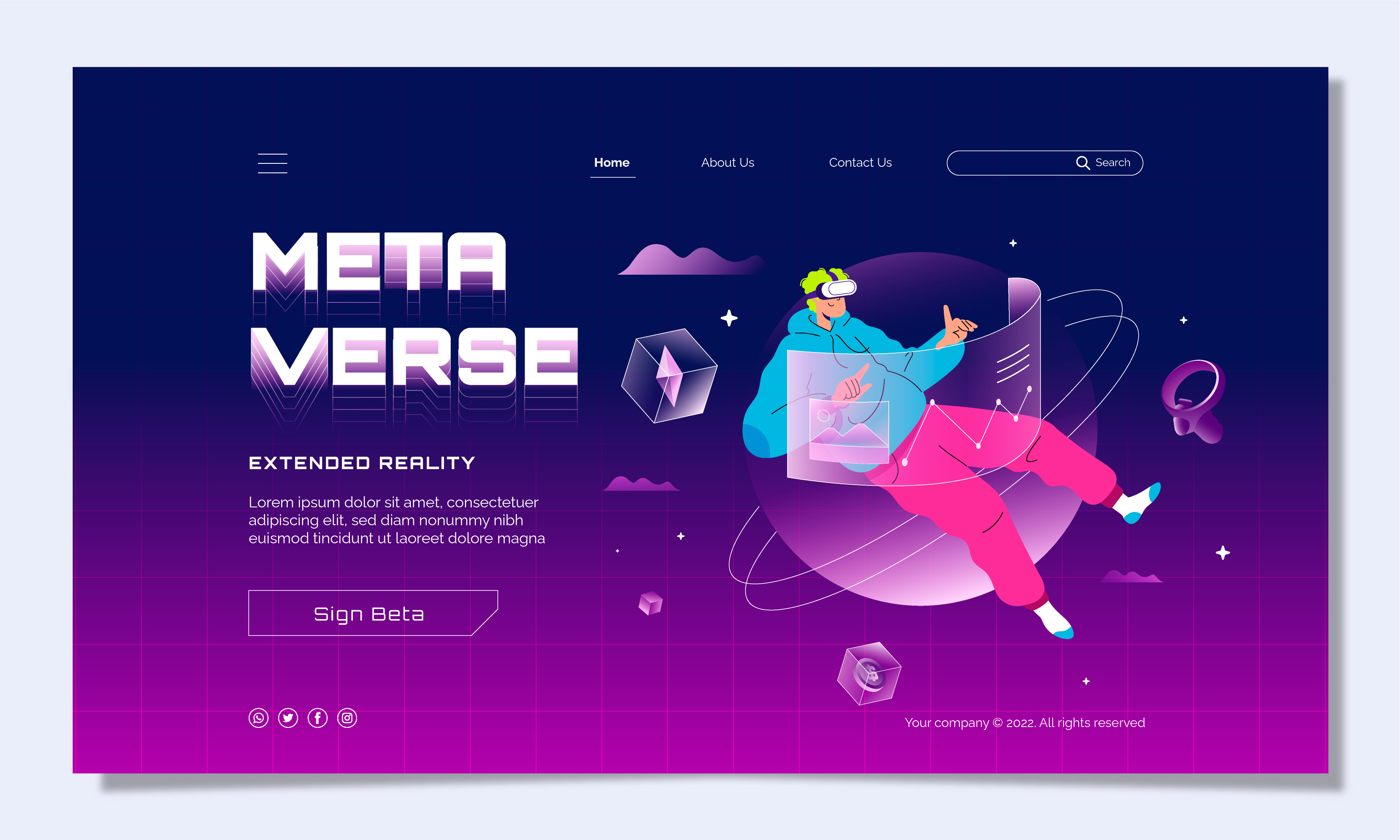
In the digital age, a website is often the first point of contact between a business and its potential customers. Whether you're selling products, offering services, or simply sharing information, a high-converting website can make all the difference in achieving your goals. In this comprehensive guide, we will delve into the essential elements and strategies to help you build a website that not only looks great but also converts visitors into customers or subscribers.
I. Understanding Website Conversion
A. Defining Conversion
Website conversion refers to the process of turning website visitors into valuable actions that align with your business goals. These actions can vary widely, from making a purchase to subscribing to a newsletter, filling out a contact form, or even simply spending a certain amount of time on your site. Understanding what constitutes a conversion for your specific website is the first step in building a high-converting platform.
B. The Importance of High Conversion Rates
A high-converting website is crucial for several reasons. It directly impacts your return on investment (ROI) and the success of your online presence. A website with a low conversion rate means that you're losing potential customers or leads, which can be costly in terms of advertising spend and missed opportunities.
C. Types of Conversions
Website conversions can be broadly categorized into two types:
-
Macro Conversions: These are the primary actions that directly contribute to your business goals, such as making a purchase, signing up for a service, or requesting a quote.
-
Micro Conversions: These are smaller actions that lead to macro conversions. Examples include subscribing to a newsletter, following your social media accounts, or adding items to a shopping cart.
Understanding the different types of conversions is crucial for optimizing your website effectively.
II. Setting Clear Goals
A. Defining Your Objectives
Before you start building or optimizing your website, it's essential to define your objectives. What do you want your website to achieve? Common objectives include increasing sales, generating leads, building brand awareness, or providing information.
B. SMART Goal Setting
Once you've defined your objectives, use the SMART (Specific, Measurable, Achievable, Relevant, Time-bound) framework to set goals that are clear and actionable. For example, instead of a vague goal like "increase website traffic," a SMART goal would be "increase organic website traffic by 20% in the next six months."
C. Identifying Key Performance Indicators (KPIs)
To measure the success of your website, identify key performance indicators (KPIs) that align with your goals. KPIs could include conversion rate, click-through rate (CTR), bounce rate, average session duration, and more. Monitoring these metrics will help you assess the effectiveness of your website and make data-driven decisions.
III. Knowing Your Audience
A. Creating Buyer Personas
To build a high-converting website, you must have a deep understanding of your target audience. Create detailed buyer personas that represent your ideal customers. Include demographic information, pain points, goals, and preferences in your personas to tailor your website content and design accordingly.
B. Conducting Market Research
Market research helps you uncover valuable insights about your industry, competitors, and customer behavior. Analyze market trends, study your competitors' websites, and identify gaps or opportunities that your website can capitalize on.
C. Analyzing Competitors
Analyzing your competitors' websites can provide inspiration and reveal best practices. Pay attention to their design, content strategy, and user experience. Identify areas where you can differentiate your website and offer a superior experience to visitors.
IV. User-Friendly Design
A. Aesthetics and Branding
Your website's design should align with your brand identity and convey professionalism. Consistency in branding elements, such as colors, fonts, and logos, helps build trust with visitors. Ensure that your design is visually appealing and resonates with your target audience.
B. Responsive Design
With the increasing use of mobile devices, responsive design is essential. Your website should adapt seamlessly to various screen sizes and devices to provide an optimal user experience. Google also considers mobile-friendliness as a ranking factor, making it crucial for SEO.
C. Intuitive Navigation
Intuitive navigation simplifies the user journey and encourages exploration of your website. Use clear menus and navigation labels to guide visitors to the information or products they're looking for. Implement breadcrumb navigation and ensure that the search function is easily accessible.
D. Page Speed and Performance
A fast-loading website is critical for retaining visitors and improving SEO rankings. Optimize images, use efficient coding practices, and leverage content delivery networks (CDNs) to enhance page speed. Google's PageSpeed Insights tool can help identify performance bottlenecks.
V. Compelling Content
A. The Power of Compelling Headlines
Well-crafted headlines capture visitors' attention and encourage them to explore further. Use engaging headlines that clearly convey the value of your content or products. Employ persuasive techniques, such as addressing pain points or offering solutions.
B. High-Quality Imagery and Video
Visual content plays a significant role in user engagement. Use high-quality images and videos that enhance your message and showcase your products or services. Ensure that visuals are relevant and optimized for fast loading.
C. Engaging and Relevant Content
Your website's content should be informative, engaging, and relevant to your target audience. Use a consistent tone and style throughout your content to maintain a cohesive brand voice. Regularly update and expand your content to keep it fresh and valuable.
D. Clear Calls to Action (CTAs)
Calls to action (CTAs) prompt visitors to take specific actions, such as signing up, making a purchase, or contacting you. Ensure that CTAs are strategically placed throughout your website, use compelling language, and create a sense of urgency when appropriate.
VI. Search Engine Optimization (SEO)
A. Keyword Research
Keyword research is the foundation of effective SEO. Identify relevant keywords and phrases that your target audience is likely to search for. Use tools like Google Keyword Planner or SEMrush to discover keyword opportunities.
B. On-Page SEO
On-page SEO involves optimizing individual web pages to rank higher in search engine results pages (SERPs). This includes optimizing meta titles, descriptions, headings, and content for target keywords. Ensure that your website's structure and URL hierarchy are search engine-friendly.
C. Off-Page SEO
Off-page SEO focuses on building backlinks and improving your website's authority. Develop a backlink strategy that includes guest posting, influencer outreach, and creating shareable content. Building a strong off-page SEO profile can boost your website's visibility in search results.
D. Technical SEO
Technical SEO addresses the backend aspects of your website that impact search engine performance. This includes optimizing site speed, improving mobile-friendliness, fixing broken links, and creating an XML sitemap. Google's Search Console can help you identify and resolve technical issues.
VII. Mobile Optimization
A. Mobile-First Design
As mobile usage continues to grow, it's crucial to adopt a mobile-first design approach. Start by designing your website for mobile devices and then scale up for larger screens. This ensures that the mobile experience is seamless and user-friendly.
B. Mobile-Friendly Testing
Regularly test your website's mobile-friendliness using tools like Google's Mobile-Friendly Test. Address any issues that affect the mobile experience, such as unresponsive design, slow loading times, or touch elements that are too close together.
C. Accelerated Mobile Pages (AMP)
Consider implementing Accelerated Mobile Pages (AMP) to further enhance mobile performance. AMP is a Google-backed project that provides lightning-fast loading times for mobile web pages. It can improve user satisfaction and SEO rankings for mobile searches.
VIII. Building Trust
A. SSL Certification
Website security is paramount for building trust with visitors. Obtain an SSL certificate to secure data transmission between your website and users' browsers. Secure websites display a padlock icon in the address bar, assuring visitors of their safety.
B. Trust Signals
Incorporate trust signals throughout your website to reassure visitors. Trust signals may include security badges, certifications, affiliations with reputable organizations, and guarantees such as money-back policies or warranties.
C. Testimonials and Reviews
Displaying customer testimonials and reviews adds social proof to your website. Positive feedback from satisfied customers can significantly influence potential buyers. Ensure that these testimonials are genuine and relevant to your offerings.
D. Privacy Policy and Data Security
Be transparent about your data handling practices by having a clear privacy policy. Explain how user data is collected, used, and protected. Comply with data protection regulations such as GDPR or CCPA to build trust with visitors concerned about data privacy.
IX. Conversion Optimization Techniques
A. A/B Testing
A/B testing involves comparing two versions of a web page to determine which performs better in terms of conversions. Test elements like headlines, CTAs, images, and form designs to identify what resonates most with your audience.
B. Heatmaps and Analytics
Heatmap tools like Hotjar or Crazy Egg provide visual insights into user behavior on your website. Analyze where users click, move their cursors, and spend the most time. Use this data to optimize page layouts and content placement.
C. Conversion Funnel Analysis
Understand the conversion funnel on your website by tracking user journeys from entry to conversion. Identify drop-off points and bottlenecks in the funnel. Optimize each stage to increase the overall conversion rate.
D. Continuous Improvement
Conversion optimization is an ongoing process. Continuously monitor and analyze your website's performance, and make iterative improvements based on data and user feedback. Small tweaks can lead to significant increases in conversions over time.
X. Leveraging Social Proof
A. Social Media Integration
Integrate your social media profiles seamlessly with your website. Share buttons, social media feeds, and social login options can encourage visitors to engage with your brand on social platforms.
B. User-Generated Content
Encourage users to contribute content, such as reviews, testimonials, or user-generated media. User-generated content not only builds trust but also creates a sense of community around your brand.
C. Influencer Marketing
Partner with influencers in your niche to promote your products or services. Influencers can reach a wider audience and provide social proof through their endorsements.
XI. Effective Landing Pages
A. Landing Page Best Practices
Landing pages are critical for specific campaigns and promotions. Create dedicated landing pages that focus on a single call to action, such as signing up for a webinar or downloading an ebook. Remove distractions and provide clear information.
B. Lead Generation Forms
If your goal is to capture leads, design user-friendly forms that collect essential information without overwhelming visitors. Consider using progressive profiling to gather more data over time as leads engage further.
C. Value Proposition
Clearly communicate the value visitors will receive by taking the desired action on your landing page. Highlight benefits, offers, and unique selling points to entice conversions.
XII. E-commerce Considerations
A. Product Descriptions and Images
In e-commerce, product pages are critical for conversion. Provide detailed, informative product descriptions and high-quality images that showcase the product from various angles. Include customer reviews and ratings to build trust.
B. Shopping Cart Optimization
Streamline the checkout process by reducing friction. Offer guest checkout options, display shipping costs upfront, and provide multiple payment methods. Ensure that the cart is easily accessible from any page.
C. Payment Security
Prioritize payment security to build trust with online shoppers. Implement SSL encryption, PCI DSS compliance, and secure third-party payment gateways. Display trust logos and security badges during the checkout process.
XIII. Website Performance Monitoring
A. Google Analytics
Use Google Analytics to track website traffic, user behavior, and conversion data. Gain insights into which pages perform well and where improvements are needed. Regularly review your analytics data to inform your optimization efforts.
B. Google Search Console
Google Search Console provides valuable information about how your website performs in search results. Monitor search impressions, click-through rates, and index coverage. Address any issues flagged by Google to improve your search visibility.
C. Website Health Checks
Perform regular website health checks to identify and address technical issues, broken links, and other issues that may negatively impact user experience and SEO rankings.
XIV. Testing and Iteration
A. The Iterative Process
Building a high-converting website is an iterative process. Continuously test and refine your strategies, content, and design elements. Stay up-to-date with industry trends and user preferences to adapt and evolve your website over time.
B. Keeping Up with Trends
The digital landscape is ever-evolving. Stay informed about emerging technologies, design trends, and changes in search engine algorithms. Being proactive in adapting to trends can give you a competitive edge.
C. Case Studies and Success Stories
Study case studies and success stories of businesses that have achieved high conversion rates. Learn from their strategies and apply relevant insights to your own website.
Conclusion
Building a high-converting website is a multifaceted endeavor that requires a combination of careful planning, strategic thinking, and continuous optimization. By understanding your audience, setting clear goals, and implementing best practices in design, content, SEO, and user experience, you can create a website that not only attracts visitors but also converts them into loyal customers or valuable leads. Remember that building a high-converting website for a website development agency is an ongoing process, and staying responsive to changing trends and user behavior is key to long-term success in the digital landscape.
Latest Post




